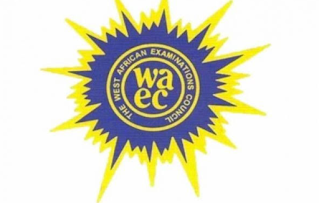WAEC 2024/2025 Animal Husbandry Obj & Theory/Essay Questions & Answers is out
2024 WAEC Animal Husbandry Objectives (OBJ) and ESSAY (Theory) Questions and Answers for School Candidates Free of Charge | 100% Legit 2024 WAEC Animal Husbandry OBJ and ESSAY Questions and Answers, WAEC May/June Free Animal Husbandry Questions and Answers EXPO Room .
ANIMAL HUSBANDRY
01-10: CCBCDBACCC
11-20: AACCDACCAA
21-30: ABBBAACCBA
31-40: BCCCDABBAB
COMPLETED
2024 WAEC ANIMAL HUSBANDRY ESSAY (THEORY) ANSWERS
(1a)
| Characteristics |
|---|
| (i) | Cattle primarily eat plants, while poultry eat both plants and insects. |
| (ii) | Cattle have a complex stomach with four compartments, whereas poultry have a simpler, single-compartment stomach. |
| (iii) | Cattle use microbial fermentation in their stomach to digest tough plant material, while poultry rely more on mechanical digestion and enzyme breakdown. |
| (iv) | Cattle have a special stomach chamber where microbes help break down tough plant fibers, but poultry lack this chamber. |
(1b)
| Methods of Parasite Control |
|---|
| (i) | Proper pasture management. |
| (ii) | Regular deworming. |
| (iii) | Rotational grazing. |
| (iv) | Maintaining good hygiene. |
| (v) | Feeding balanced diets. |
| (vi) | Selecting resistant breeds. |
(1c)
| Methods of Improving Local Breeds |
|---|
| (i) | Selective Breeding Programs. |
| (ii) | Crossbreeding. |
| (iii) | Genetic Selection Using Molecular Techniques. |
| (iv) | Improved Nutrition and Management Practices. |
| (v) | Community-Based Breeding Programs. |
(1di)
| Advantages of Creep Feeding |
|---|
| (i) | Allows young animals to access additional nutrients beyond their mother's milk. |
| (ii) | Reduces competition for food among different age groups or sizes of animals. |
| (iii) | Facilitates early weaning by providing supplemental nutrition to young animals. |
(1dii)
| Advantages of Dehorning |
|---|
| (i) | Reduces the risk of injuries to both other animals and handlers. |
| (ii) | Enhances handling and safety during routine management practices. |
| (iii) | Reduces the likelihood of equipment or other facility damage. |
(2a)
| Importance of Housing |
|---|
| (i) | Protection from adverse weather conditions. |
| (ii) | Prevention of predation. |
| (iii) | Reduction of stress. |
| (iv) | Control of disease transmission. |
| (v) | Facilitation of efficient management practices. |
| (vi) | Optimization of growth rates and production. |
(2b)
| Advantages of Grouping Animals by Age |
|---|
| (i) | Prevention of aggressive behavior and competition for resources. |
| (ii) | Reduction of the risk of injury to younger or smaller animals. |
| (iii) | Facilitation of age-specific feeding and nutritional requirements. |
| (iv) | Control of disease transmission between age groups. |
(2c)
| Pre-Brooding Management Practices |
|---|
| (i) | Cleaning and disinfection of the brooder house. |
| (ii) | Installation and testing of heating equipment. |
| (iii) | Placement of clean and dry bedding material. |
| (iv) | Provision of clean feeders and drinkers. |
| (v) | Adjustment of lighting to simulate natural day-night cycles. |
(2d)
| Animal Products |
|---|
| (i) | Pelt - Chicken |
| (ii) | Bristle - Pig |
| (iii) | Mohair - Goat |
| (iv) | Veal - Calf |
| (v) | Lard - Pig |
(3a)
| Definitions |
|---|
| (i) | Breed - a specific group of animals with common characteristics. |
| (ii) | Genotype - the genetic makeup of an individual animal. |
| (iii) | Hybrid - an individual resulting from crossbreeding different breeds or species. |
(3b)
| Disadvantages of Inbreeding |
|---|
| (i) | Loss of Genetic Diversity. |
| (ii) | Increased Expression of Undesirable Traits. |
| (iii) | Decreased Fitness and Vigor. |
| (iv) | Inbreeding Depression. |
(3c)
| Feed Sources |
|---|
| (i) | Plant Protein Sources - Soybean meal, Cottonseed meal. |
| (ii) | Animal Protein Sources - Fish meal, Meat meal. |
| (iii) | Fiber Sources - Alfalfa hay, Timothy hay. |
(3d)
| Limitations of Artificial Insemination |
|---|
| (i) | Limited Access to Technology. |
| (ii) | High Cost of Implementation. |
| (iii) | Limited Extension Services. |
| (iv) | Cultural and Religious Beliefs. |
(6ai)
| Factors Affecting Nutrient Requirements |
|---|
| (i) | Physiological status. |
| (ii) | Age. |
| (iii) | Nutrient composition of feedstuff. |
(6b)
| Meat Processing Steps |
|---|
| (i) | Process of slaughtering. |
| (ii) | Undergoes dressing. |
| (iii) | Cutting and Boning. |
| (iv) | Transforming raw meat into value-added products. |
| (v) | Packaging using appropriate materials. |
(6c)
| Definitions |
|---|
| (i) | Selection - choosing animals with desirable traits for breeding. |
| (ii) | Pasture - an area of land covered with grasses or other forage crops for grazing. |
| (iii) | Artificial Insemination - a reproductive technology for breeding livestock. |
(6d)
| Products from Animal Agriculture |
|---|
| (i) | Meat. |
| (ii) | Pelts. |
| (iii) | Manure. |
ANSWERS LOADING ==============
<<<KEEP REFRESHING THIS PAGE>>>
👇👇👇👇👇👇👇

